I am responding to a common question that was asked to me about why you would put one hand in front of or on top of the other in qigong or meditation positions where this is required.
First in my personal opinion, for most people its not that strongly important which hand goes on top or on bottom. Many schools of thought in the qigong world as well as the yoga field say the energetic anatomy of men and women on the left and right channels is different. One way that this is described in a lot of detail is that one side of the body is either the sun or the moon or the male and the female.
In the energetic schools that have this thought, they will then tell the man or woman to put one hand in front of or in back of the other hand based on either the right or left channels of the body. This is a practical matter and I had this discussion with many of the masters I knew. However, after all my explorations I came to understand that until a person is at an advanced stage and is very deliberately working with their left and their right channels it does not matter all that much.
At a very practical level there is one main point that does matter and may influence your choice. This is that most people’s bodies are slightly imbalanced, either the left or right side of their body where in many small areas some will be more or less stretched than the other. The less stretched side could be that way because of genetics, trauma, uneven stretching, or other activities accumulated over daily life.
Usually the side of the body that is dramatically less stretched is the one you want to put on top or in front because it will stretch that side of the body out. Why will this happen? It will happen because the tighter side of the body, by being put in the forward or top position, will naturally stretch it more.
If you are sitting in meditation and have your hands palms facing upwards (to the sky) that means that the less stretched side would be put on bottom. If your palms are facing your tantien the less stretched side would be the hand that is furthest from your body. What this will do is it will slowly cause your body to release so that both the left and right sides of your body will be equal. This will increase the degree of chi flow and motion of your nerves into the side of the body that is naturally compromised.
Beyond that important practical point, when you reach a much more advanced level of qigong and you are deliberately working with the left and right channels of the body, there are various ways that you would place the hands. This has to do with deliberately balancing out and affecting the energies of the left and right channels. To simplify this, most qigong or tai chi masters will say put one hand or the other in front in general, however, the truth of the matter is much more complicated as you can see.
Although a teaching sound-bite may not be false, it is also may not be completely true. Each circumstance may require a different approach to achieve the results your are after.

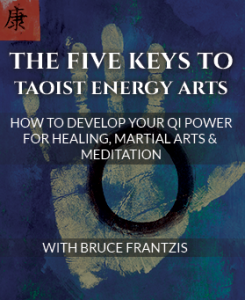
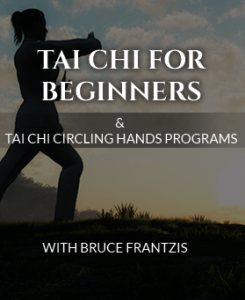


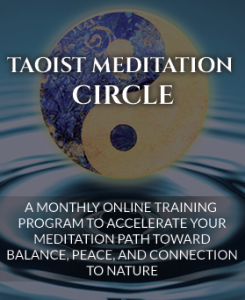
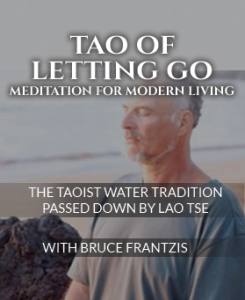
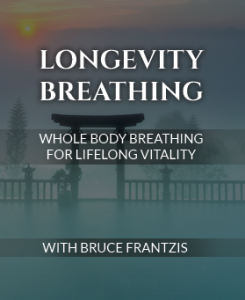
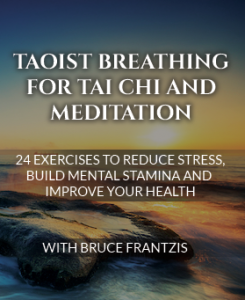
Thank you. Well defined explanation. I will pass it along.
Thanks for the posting, Bruce. Very informative and to the point.
In the Jade Dragon tradition our master taught that the hands are held so that the middle finger tips touch allowing for a coupling of the Pericardium hand jue yin meridians. This takes the issue of male or female out of the equation entirely.
In both Taiji and Qigong, the correct format Always, Ladies left ,
Gentlemen right right hand on top.
From a purely physical standpoint, there is not enough distance between one hand over another, in meditative poses, to make any stretch difference. You didn’t mention the cultural preference between right and left handedness. I am left handed and when learning Kobujutsu and Kendo, everything hand to be done right handed. From a purely martial viewpoint, you should work with both positions. Think about your Taijiquan forms, try reversing the handedness and see how far you get before you have to stop and think about what to do. In actual combat, you might need to apply any technique on either side, yet the forms are almost completely one sided: play guitar, single whip, hidden hand punch, etc. I have seen Chen stylists do Cloud Hands in both directions, but that is the exception.
I disagree Jeff.
When sitting for prolonged periods of time in a meditative posture (if the posture is done correctly and is deepening your alignments as you progress) there is a significant stretch to both arms as the energy channels of the body open up.
I have a hurt right shoulder and there is a felt different in the energy and the stretch of my whole torso if I put my right hand on top as opposed to on the bottom when meditating.
I agree with what you said about tai chi. I think Bruce is more referring to static positions where one hand is held on top/in front of the other for prolonged periods.
Hello Thomas,
I am a Licensed Massage Therapist as well as a long time martial arts (50 years) and Qigong (34 years) practitioner. I am also one of two lineage holders in Zhou Family Qigong (Jade Power Qigong). There is almost no physical stretch of the arms when in any seated meditation position I have seen. If you want to stretch your arms and meridians, do a standing meditation (Zhan Zhuang – 站桩 ) called White Crane Spreads Wings, and do it on both sides.
You can also do Holding up the Heavens from the Eight Section Brocade as a Zhan Zhuang or moving gong.
Thank you for the input Jeff. I will look into more zhan zhuang postures.
I agree. No one has perfect bilateral symmetry particularly in the early years so positioning left or right to account for that fact is a very appropriate answer for this often asked question.
Thanks!
With reference to taiji: if you’re not practicing left and right sides, you should be!
I do not know of any Taijiquan forms that are symmetrical. Please let me know what style and teacher teaches a 100% symmetrical form.
Just try reversing any form and you will see how different it feels.
Was trying to say: You are probably only being taught one side; but should be practicing it both left and right sides. Yes it does feel very different at first, but you soon get the hang of it if you persevere.
My Tai ji Master would say ” You only sharpen one side of the sword”
Good Question and good answer. My first teacher said right for male and left for female unless the male had heart problems when the left would be used as against male right.
Sharon Davis: I was surprised that so few replys caught the simple truth of this. You learn the form in mirror image as a matter of routine in some schools in order to ballance the thing. What is routinely taught as Tai Chi now, was called “right side Tai Chi” when I first learned the Yang style known as Quan Pin Yang in San Francisco, back in the 70’s.
Thanks Sharon but I was refering to meditational posture. Do practise left and right as it is easier to teach but do make mistakes ugh!
My zen teacher taught us that although which hand went on top probably didn’t matter a great deal, it was his experience that the left side of the body was calmer and so having the left hand on top would help the body settle in meditation more easily. He also taught a mudra to use if you were feeling ill–put the right ring finger tip between the base knuckles of the third and fourth fingers of the left hand, and the right thumb tip against the inside of the palm facing the ring finger tip. Curl the left hand around the right thumb so that the tip of the right thumb lightly touches between the tips of the right third and fourth fingers. Hold very lightly. He also taught us when using the typical mudra of the left hand over the right to very lightly touch the thumb tips together–he said that if you put too much tension there that it will cause the breathing to become tight. He offered the image of holding a piece of rice paper between the thumb tips with just enough pressure to keep it from blowing away with the wind, but not so much that the fingers would leave a mark on the paper. He had us put our attention in the center of the palm of the left hand, saying that trying to put the attention directly in the belly or hara (or lower dan tien) would probably cause too much tension initially.
Bruce, How the heck are you. This is great!!!!! Nice to hear so many wonderfull folks on the path even after 50 years wanting to learn more. Hope all is well with you. My QI Gong classes are going great. I have 40 students in three nights and more want to come, but I can’t handle more. Your books and tapes are super!!! My students like your style of teaching…they all bow to you and what you are doing for so many people. Very best to you and keep up the good work! DJ Schmidt, Professional Member and teacher NQA Michigan.
Bruce, This is great!!! I bow to you and your work, best to you, DJ Schmidt Professional member NQA, Michigan.
I haven’t seen anyone mentioning the fact that there is an old Taiji saying ” left side up, right side down”. This is, incidentally, why most forms start with the left foot stepping whilst the right side sinks. The “normal” flow of energy in the torso, {or if you like the left and right Mai} and in particular in relation to peristalsis and digestion (despite the convoluted and multi directional nature of the intestines), is up on the left side and down on the right side (of the practitioner).
Using as an example exercises involving rotation of the Dantien in the coronal plane, rotating left side up and right side down promotes improved peristaltic function: whilst not common, it is possible that rotation the other way (right up, left down,) can cause constipation or other digestive problems by reducing peristaltic function.
Extending and following this principle outwards, then in common Taiji postural structures, e.g. crossing hands, the left hand should be on the outside (further away from the torso). Regarding left vs right form and Taiji practice in general, after around 9 years of training on both sides I stopped doing “left handed” forms. After about 15 years I had experienced enough to understand that I had been correct to do so: the organs and structures in the body are NOT symmetrical in either their form or function: neither are all of the Taiji postures. Some postures {e.g: Cloud Hands, Fair Ladies,} can safely and beneficially be executed either way round: but not all of them.
Although it is much less important, because hardly any internal (qi) movement need take place durng seated Meditation, I still follow the principle and have the left hand on the bottom (further away). I would suggest that for those who like to meditate palms up, lightly interlocking the fingers will cause the arm joints to be gently stretched open as they relax and fall away: also the lao gung points should remain uncovered. Enjoy the quiet.
Hello Paul,
You have this backwards: “The “normal” flow of energy in the torso, {or if you like the left and right Mai} and in particular in relation to peristalsis and digestion (despite the convoluted and multi directional nature of the intestines), is up on the left side and down on the right side (of the practitioner).”
Ascending colon is on the right, transverse runs from right to left and the descending colon is on the left. Chan Si (Silk Reeling) jin and Peng jin can (and do) spiral in either direction.
However, the main meridians in TCM are symmetrical, except for the Ren Mai and Du Mai.
Also, it depends on the style of Taijiquan you are learning. If you learn Chen style, there are many instances where the right is up and the left is down (Snake Creeps Down, Dragon at Bottom of the Sea, etc). In addition, whenever you change direction, you sink to the opposite side first: “To go left, go right, to go right, go left”. This is from the Bubishi, which originated in S. China, but has martial principles basic to almost all Chinese arts.
As you quote TCM then you should know that the liver is responsible for (is the root of) several common medical syndromes (conditions), e.g. liver fire/yang rising, in which the excessive “fire” of the liver spreads upwards and negatively affects the body (Anger, red face + eyes, hi temp, headaches), As the right Mai goes thru the liver then deliberate upwards movement of Qi thru the R. Mai is contra-indicated by TCM: Similarly, the Left Mai passes thru the spleen, which supplies Qi i from food to the lungs & heart to create blood: also, spleen Qi moving downwards can be the cause of organ prolapes so induced downward movement in the L. Mai is contra- indicated wheras induced upward movement in the L. Mai is desireable.
Taking the example of “Snake Creeps Down” (any family style): usually (and IMHO correctly) done left hand going forwards (extending outwards) follows the principle of ROTATION OF INTERNAL QI IN THE LEFT AND RIGHT MAI which I previously outlined: Dragon (I’m guessing “needles”) @ sea bottom is not relevant to this discussion because the primary Qi movement is of the front (down), and back and central (up) Mai, rather that the L + R Mai.
Lastly, I am aware of the physical directions of the colons: however, they transport shit, wheras I’m discussing Qi: hope this clarifies.
Hello, just wanted to contribute to this lively discussion. I think it is important to consider that the gross energy movements of the central, left and right channels, moving up and down, give cohesion to all of the convoluted pathways of the physical body. That is, if the energy is simply and smoothly flowing up and down throughout the six or seven vertical feet of the physical energy body, by harmonic induction the instinctual healing intelligence of the body knows how to sort out the the circulation through countless miles of vessels, nerves, tubes, etc. So the basic principle would be to make sure that all of the gates are open from head to toe to insure complete circulation.
That being said, it just so happens that yesterday, after practicing chi gung for 10 years, it became apparent that in moving forms, it does indeed matter which hand is passing in front of the other when one hand is moving up and the other down. I am referring specifically to the movement from the Eight Pieces of Brocade known as “Plucking stars ” or “Upholding heaven with one hand to regulate spleen and stomach”, where one hand presses up and the other down and the hands invert their positions. I found that the effect of the exercise was much more calming if the downward traveling hand was on the inside and the upward traveling hand on the outside. Why? Because the inside hand, moving down, helps to move the fire chi down, while the hand traveling up on the outside helps to move the water chi up, to acheive the merging of fire and water.
Incidentally, one of my favorite simple chi gung movements (because it is so simple and utterly effective) is to simply start with the right hand up and the left hand down, and then sink the right hand while letting the left hand float upward in a sympathetic counter-movement so that right hand ends up down and the left up. The calming and balancing effect of this little move is immediate, and I believe it is because it helps the liver chi to sink and the spleen chi to rise.
Bruce,
As always, you have explained a subject in a clear, pratical manner and you are right on target. As a student of martial arts for 46 years and a student of t’ai chi for 35 years, I can tell you we all learn sooner or later that we have a weak side and a strong side. I prefer to call it a good side and a better side. This applies to everyone.
Simply stated, we work harder on the good side to balance it with our better side. Something else to consider about starting to the left or starting with the left hand: In ancient art, the sun was shown as rising on the left and setting on the right. So in a karate kata or in a tai chi form when you begin by facing left and end by facing right, it is a symbol of the fact that you pratice from sun up to sun set. Anyway, I really apreciate the good you do and I thank you for allowing me to comment……Phil
A very useful question to ask yourself is “what is the best way to learn?”
I have found with many subjects the best way to learn is to try and come to a new subject with the open mind of a curious child. This means to a certain extent putting aside temporarily the things you have previously learned before and looking at what you are being taught as if it was for the first time.
As a personal example, I had learned certain types of Chi Kung before I encountered Bruce’s material. I was taught various alignments, breathing patterns, where to put my attention etc. Then I met one of Bruce’s instructors and to begin with when they said “do xyz” I was thinking “yeah yeah whatever, I know that” I also noticed that there was an almost unstoppable desire “not to be a beginner” I basically wanted other people in the class to know that Id trained before and knew a bit about Chi Kung.
Over time I began to realize that interpreting what my new instructor was saying in the light of my previous experience and training was actually acting as a block to my progress. What the new teacher was saying was actually similar but subtley different to what I had learned before. The magic was in the subtle difference! My great desire to not be a beginner was making me practice what I had learned before rather than take on the new teaching, I realized this was purely my ego and was again blocking my progress.
It was only when I viewed this material with fresh eyes, put to one side my previous learning and training, listened with an open mind to my new teacher and threw away my need to “not be a beginner” that I began to see subtleties I had completely missed before and began to make real progress.
So my advice to some of the other posters, rather than spouting what you have learned before, or trying to show your vast experience. Put all that to one side and come to new material with the fresh open mind of a curious child and you will be amazed in a good way.
This is a useful technique for learning all things not just Chi Kung. We are so often blocked by our previous preconceptions and conditioning. After all you can always go back to your previous stuff if you don’t get on with the new, but if you don’t honestly give it a chance then you will never know.
Thanks Bruce for a fantastic blog
I used to have such a fret trying to find out which hand should be where. I have studied with Shamans to Tai Chi Grand Masters over 30 years, have a degree in Traditional Chinese Medicine, Qi Gong and am a registered master of Tai Chi and the truth is: do it the way that feels right. Your body knows what’s best and will always try to heal itself. So, do what feels best.
Nice one Paul, listen to the body and what feels the best way. This may change through time of course. This goes back to Tai Chi Master’s original comments.
I’ve the reluctant beginner; I’ve bought tapes to help me learn t’ai chi at home, but each one shows the instructor right handed, now, growning up in a right hand world, I’ve learned to adjust everything to my left handed ways. So, instructors do do a back version of the same move, but it’s not the same (to me, anyway). But again being reluctant to start, it would be nice to have a dvd with a left-handed instructor who understands the mental delimna for a left-handed person trying to first learn the basic moves to achieve that balance of left & right……I’m just saying.rsp
I heard from a teacher that right hand on top for meditation, left on top for effecting the external world; and that usually, unless advanced, do not free the left hand to be on top as one is not complete enough yet to be competent to address the external world, the world behind the material world, by allowing the left hand to be in the primary position. For most, for the beginner and the uninitiated so to speak, that left hand needs to be suppressed. I was told that yang is the active and yin the passive, the male and the female, but that it is the yin power that truly effects and restructures an errant course that a Master makes effort to correct.
At least that’s how I understand what it is I thought I heard from my teacher.
Does this sound at all familiar or intelligible to anyone?
Thanks.
This is to me a profound discussion.
I am in gratitude with you all.
I would like to add a few thoughts.
In relation to stronger sides I think that we must respect wood for it’s aspects and we must respect metal for it’s aspects.
In myself I find that looking to my left shoulder I feel wood and looking to my right shoulder I feel metal.
I personally place my left hand over the right and find it in harmony with the tao.
All rivers flow to the same ocean so essentially I am not against trials and errors as it all leads home.
But it is my advise that those wishing to cultivate them selves should align their hands in the perspective that fits their pursuit.
That would be in simpler terms that women pursue feminine empowerment and men pursue masculine empowerment.
The intuition(yin) of the wife and the exuberance(yang) of the husband are as one the ultimate unity.
I do not advise the sharpening of double edged swords lest you understand the power of fire and water thoroughly.
The majority of society is Yangish or masculine in their behavioral patterns.
This is in correspondence to most people being inclined to place the right hand over the left as when instructed to place hands on Dan Tien.
I advise women to place the left over the right hand and vice versa for males.
In real childlike but none the less beautiful terms I would say that by adhering to the old school of hand placements the girl trains to accept the hug from the boy and the boy trains to accept the hug from the girl.
I could go on and on and on about this profound and beautiful subject and I am truly grateful for an opportunity to receive and share thoughts on the Dan Tien hand placements.
Sincerely
Lydia Rosa
Thanks Bruce, that’s brilliant. I was wondering which way to finish my practice. I’ve heard men should finish with right hand on top but it’s my left side that is more blocked and so I’d naturally want to put this on top. That explains it and I know now to go with my intuition.
The right-hand is Yang the left hand is Yin. In the male the Yang/sexual organs are outside. In the female the Yang/ sexual organs are inside. Therefore in the male the right-hand is naturally outside / under and the left-hand is inside or over the right hand.